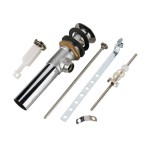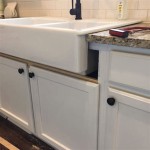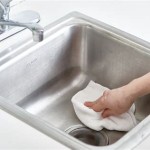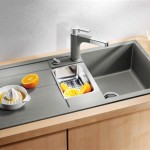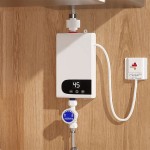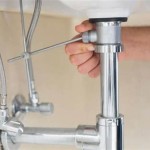How To Fix A Clogged Sink Drain
A clogged sink drain is a common household problem that can lead to frustrating inconveniences and potential damage if left unaddressed. Blockages typically occur due to the accumulation of hair, food particles, grease, soap scum, and mineral deposits within the drainpipe. Understanding the potential causes and employing effective troubleshooting methods can often resolve the clog without the need for professional plumbing services. This article outlines various techniques for diagnosing and resolving sink drain clogs, ranging from simple DIY solutions to more involved procedures.
Identifying the Problem
Before attempting any repair methods, it is crucial to accurately assess the situation. Start by observing the behavior of the sink when the water is running. A slow draining sink is a primary indicator of a partial clog, where water gradually recedes over time. A completely blocked sink, where water pools and does not drain at all, signifies a more severe blockage. Another sign is gurgling sounds emanating from the drainpipe, which indicates air trapped within the system due to the blockage.
The location of the clog can also be estimated based on which fixtures are affected. If multiple sinks or drains are affected, the blockage is likely located further down the main drain line. If only one sink is affected, the clog is probably localized within the drainpipe directly under that sink. Identifying these indicators allows for a more targeted and effective approach to removing the blockage.
Check if the garbage disposal is the cause of the blockage. If the sink in question is connected to a garbage disposal, ensure that the disposal is functioning correctly. Turn on the disposal while running water to see if it grinds properly. Sometimes, a jammed disposal can prevent water from draining freely. If the disposal is not working, consult the appliance manual for troubleshooting steps specific to that model. This may involve resetting the unit or manually removing any obstructions.
Simple DIY Solutions
One of the simplest and most readily available solutions is to use hot water. Boiling water can effectively dissolve grease and soap buildup that often contributes to clogs. Carefully pour a kettle or pot of boiling water directly down the drain. Exercise caution to prevent burns, especially if the sink is made of porcelain, as extreme temperature changes can cause cracking. It is also important to avoid using boiling water on PVC pipes, as the high temperature can soften or warp the plastic. Run hot tap water afterward to further flush the drain line.
A mixture of baking soda and vinegar is another common household remedy for minor clogs. First, pour about one cup of baking soda down the drain, followed by one cup of vinegar. The chemical reaction between the baking soda and vinegar creates fizzing and pressure that can help dislodge the clog. Allow the mixture to sit for approximately 30 minutes, then flush the drain with hot water. This method is generally safe for most types of pipes and can be repeated if necessary. For more stubborn clogs, increase the amount of baking soda and vinegar used or extend the sitting time.
The use of a plunger is a traditional and effective method for dislodging clogs. Ensure there is enough water in the sink to cover the cup of the plunger. Create a tight seal around the drain opening using the plunger cup. Push and pull the plunger up and down vigorously for several minutes, maintaining the seal. The pressure created by the plunging action can often break up or loosen the clog. Remove the plunger and check if the water drains freely. Repeat the process if necessary. For sinks with multiple drains, seal the other drain opening with a wet cloth to maximize the effectiveness of the plunger.
Advanced Drain Cleaning Techniques
If the simpler methods fail, a more hands-on approach may be required. The drain snake, also known as a plumber's snake, is a flexible tool designed to reach further into the drainpipe and break up or retrieve obstructions. Insert the snake into the drain opening and carefully feed it down the pipe, rotating the handle to navigate around bends. If you encounter resistance that suggests hitting a clog, continue to rotate the snake to attempt to break up the clog or hook onto it. Once the clog is broken or hooked, slowly retract the snake, pulling out any debris that is attached to the end. Repeat the process until the drain flows freely.
Cleaning the P-trap is another effective method for removing clogs that are located within the curved section of the drainpipe under the sink. Place a bucket or container under the P-trap to catch any water or debris that will spill out when the trap is disassembled. Loosen the slip nuts that connect the P-trap to the drainpipe. Carefully remove the P-trap and inspect it for any obstructions. Remove any visible debris by hand or with a small tool. Rinse the P-trap thoroughly with water before reassembling it. Ensure that the slip nuts are tightened securely to prevent leaks.
Another often overlooked area is the horizontal drain pipe that runs from the P-trap to the wall. This pipe can also accumulate debris over time. After removing and cleaning the P-trap, use the drain snake to inspect the horizontal pipe extending into the wall. Carefully insert the snake into the pipe and attempt to dislodge any clogs present. Slowly retract the snake, removing any debris that is attached to the end. If the clogs are heavy, it might be best to use a wet/dry vacuum cleaner with the hose attached to vacuum cleaner to suck the debris out. Once done reassemble your P-trap.
Sometimes, aerators installed on the faucets can become partially blocked with mineral deposits or debris, reducing water flow and mimicking the symptoms of a clogged drain. To inspect the aerator, unscrew it from the faucet spout. Disassemble the aerator components and rinse them thoroughly under running water to remove any debris. Soak the components in vinegar to dissolve mineral deposits that may have accumulated. Reassemble the aerator and reattach it to the faucet spout. Check if the water flow has improved.
Preventative Measures
Preventing clogs from forming in the first place is crucial for maintaining a smoothly flowing drain. Avoid pouring grease, oil, or coffee grounds down the drain, as these substances can solidify and accumulate within the drainpipe. Use a strainer or mesh screen to catch hair, food particles, and other debris from entering the drain. Regularly flush the drain with hot water to prevent the buildup of grease and soap scum. Periodically use a baking soda and vinegar mixture as a preventative measure to keep the drain clean.
Consider using enzymatic drain cleaners regularly. These cleaners contain enzymes that break down organic matter, such as hair and food particles, without harming the drainpipes. Follow the instructions on the product label for proper usage. Avoid using harsh chemical drain cleaners, as they can damage the pipes and pose a risk to human health. These chemicals are often corrosive and can cause burns or other injuries if mishandled. Furthermore, they can pollute the water system.
Regularly inspect the drain stoppers in the sinks and bathtubs. Ensure that they are functioning properly and not allowing debris to pass through. Clean the stoppers periodically to remove any accumulated hair or debris. If the stoppers are damaged or worn, replace them to prevent clogs from forming. Investing in high-quality drain stoppers can help to minimize the amount of debris that enters the drainpipe, reducing the likelihood of clogs.

How To Unclog A Sink The Right Way

How To Unclog A Kitchen Sink The Home

How To Unclog A Sink

How To Unclog A Bathroom Sink Hana S Happy Home

5 Natural Ways To Unclog A Bathroom Sink Hiller How

How To Unclog A Bathroom Sink Hana S Happy Home

How To Unclog A Sink 5 Natural Easy Ways Kitchen Cabinet Kings

How To Clear A Clogged Drain Reviews By Wirecutter

How To Unclog A Kitchen Sink Drain

How To Unclog A Kitchen Sink The Home
